Forgiving all tired cliche, we, as New Yorkers, live in the food capital of the world. Grand sweeping statement of profound truth? Absolutely not. As close to a fact without supporting evidence as you can possibly get? Maybe. Sure, let's go with that.
As unhelpful as that empty observation is, so too is our inclination to treat every day like some weirdly understood cheat day for a diet we neither should have told ourselves we'd start nor celebrated in those lonely two days we actually maintained it.
Thanks to the over-saturation of big-chain fast food spots, wildly delicious food creations―namely dessert-oriented, and, yeah, pizza (God, forgive us for what we have said here today about pizza), New York City is in a unique Bermuda Triangle of nutritional Hell.
Drifting in the purgatory of all of this? Our health-conscious decisions that we seldom make.
Something at our core tells us that we don't have the time to make the right choice, that making the right choice consistently will cost us more in the short-run than what we can easily make up for in the long run, and that good food, quite simply, is too hard to come by easily.
All of those, in one way or another, are false assumptions we make, and for that, we suffer. Sure, sometimes it's just a little too easy to eat the dollar slice, double down and get two, and call that our lunch.
Fun fact about New York City: despite the endless array of food choices, both of the refined brick & mortar and the wildly convenient food cart variety, it's not, actually, impossible to eat healthy.
[anad]
While that might not sound like much of a bombshell, that's the surprising―and somewhat terrifying―thing about food: we never seem fully conscious of the food choices we make.
Again, something at our core―call it hunger pangs, the sheer stress of our day-to-day, or the baffling expense at which we pay to remain here, we don't get far enough along in the thought process to even consider what making that right choice might actually mean.
But, thankfully, someone else is looking out. Someone is consciously and actively helping us make that better decision. Someone is fully invested in the oft-forgot adage, 'You are what you eat.'
Her name is Elizabeth Slavutsky, founder of the Blue Dog Kitchen Group. Maybe you've been to one of their four locations in NYC. Maybe you only know the flagship store on 25th Street in Chelsea. Maybe her mother was the first one to teach you how to pronounce "Quinoa."
I got to catch up with her over the phone, and we spoke about all of this, the pressures one must endure and overcome to succeed in the overwhelming NYC food scene, and, how something as simple as roasted apple on a sandwich or butternut squash fries might change the way you eat.
Jamison Hackelman: Can you give me some background on the Blue Dog Restaurant Group? Where, when, how did it start?
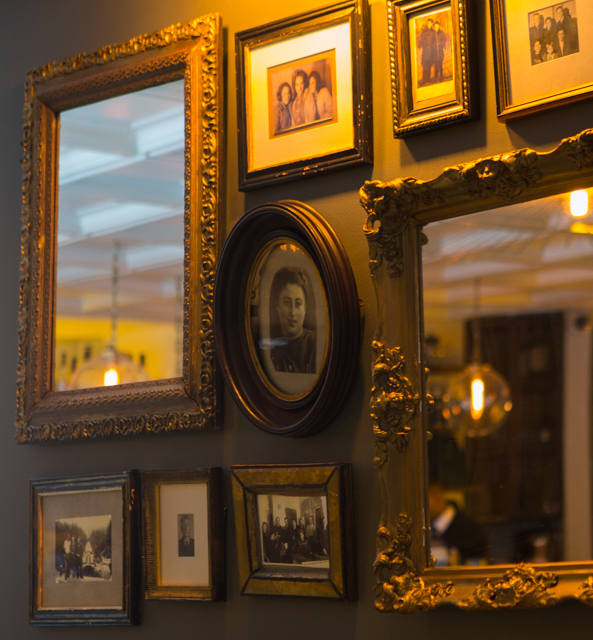
Elizabeth Slavutsky: My Grandmother was a very big part of my childhood. I was basically raised in the kitchen, so instead of playing with dolls, I was in the kitchen. And I found it to be second nature.
I’ve always had a job in hospitality. I went on to start my career in film production, my Mom wanted to start a cafe―she wanted to get out of the medical field―so I decided to help her out. Originally, I thought it would be a 3-6 month project, but I didn’t realize how much I would fall in love with it.
So it all started in Chelsea back in 2006, and the twist to Blue Dog originally was that there were many, many family recipes that called for fried items, so we decided to take it up a notch and make sure it’s not fried. From there it was simply making sure everything was either homemade or not processed.
We don’t buy anything from anyone else, we don’t waste our own product, and they’re all our own recipes.
JH: How long into running that first location did you know it would become bigger?
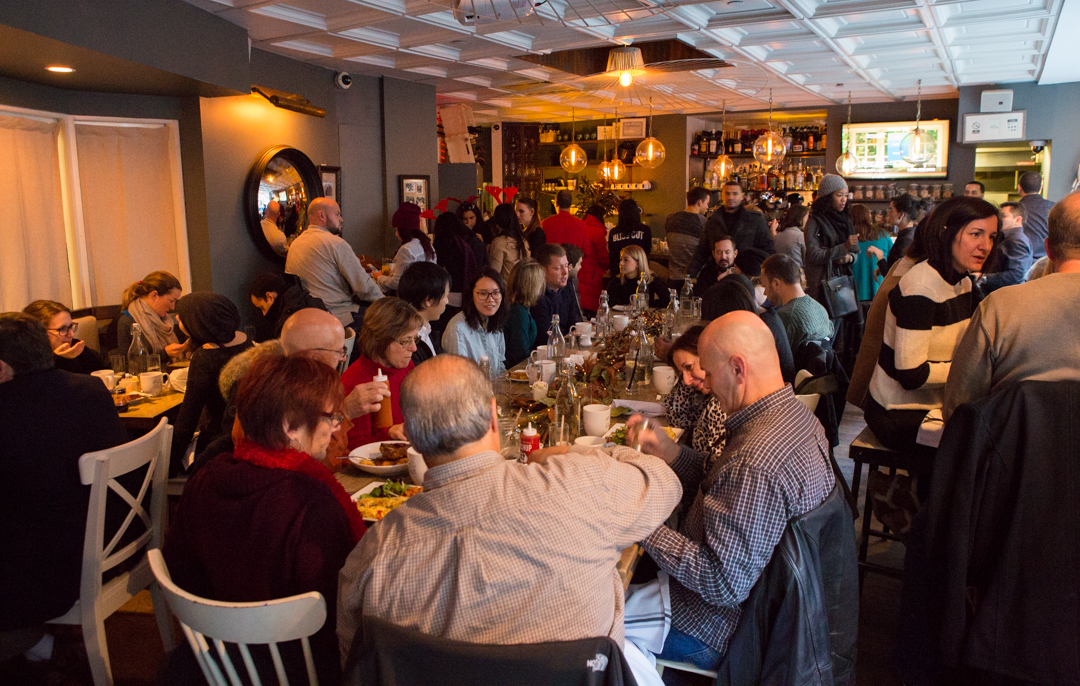
ES: I thought it would be a little longer only because I decided to take off for another three months to stick around and grow the business because it was fun, and it was fast, and there were so many moving pieces. It was very similar to what I was doing in film, but at least here, this way, it was all under one roof.
In less than a year and a half I realized that Midtown really was in need of a place like us.
Not only because a lot of the clientele who lived in Chelsea but worked in Midtown would literally come in every day would tell us exactly that― it was a lot of customer motivation, but at the same time, it was also just knowing that nothing else like us existed on the market.
Everything was feeling very commercial, and we decided that not only was that totally against our belief system, but that’s just not the way we do or would do things.
JH: Talk to me about the challenges of maintaining the core values of this concept. Just how hard is it to maintain a locally-grown fresh food concept in NYC?
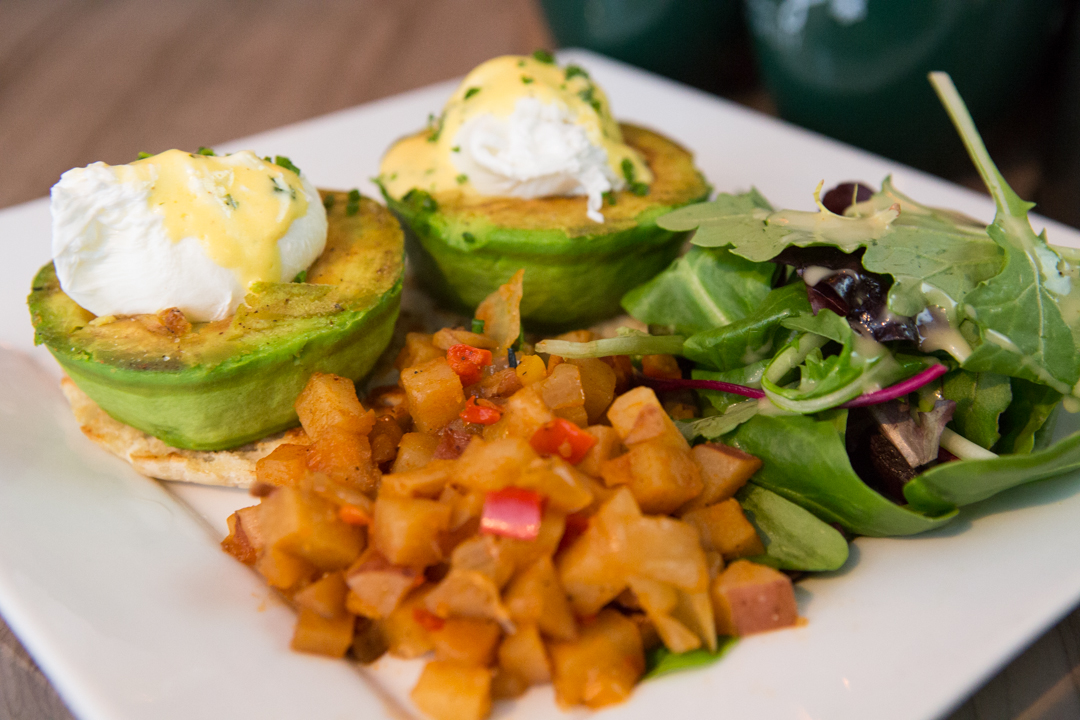
The challenge has been, especially with product availability, and people calling things "organic" versus "farm fresh" or "farm raised," or "grass fed" versus "organic." There are many different words that people now use, and even those have changed a lot in the past decade.
So you just have to be careful who you’re buying from, especially because it’s coming from the source and it’s never frozen―we never freeze anything, we use everything fresh.
But, obviously pricing for that now that the demand for that has become a little bit of an issue. We try to keep our costs down as much as possible so the consumer can still enjoy it without going through their daily budget in one meal.
In less than a year and a half I realized that Midtown really was in need of a place like us.
And I've found oftentimes there are many companies out there that just seem mimic what others do, so we try to stay one step ahead.
For example, Quinoa―true story― everyone's eating it these days, but 10-11 years ago, people who were coming in at Chelsea and order it, they were coming in on a daily basis, and we’d have to teach them how to say it. My mom, actually, was at the counter correcting them, and they’d call it “Kee-nola.”
Same with kale. It’s grown in popularity over the last three to four years now, but prior to that we were probably one of the few people carrying outside of the high-end. There’s no reason you can’t have what people consider high-end or “gourmet” food in a quick-serve environment.
That’s really the concept; it’s taking a product that you’d find in a high-end restaurant and have that daily.
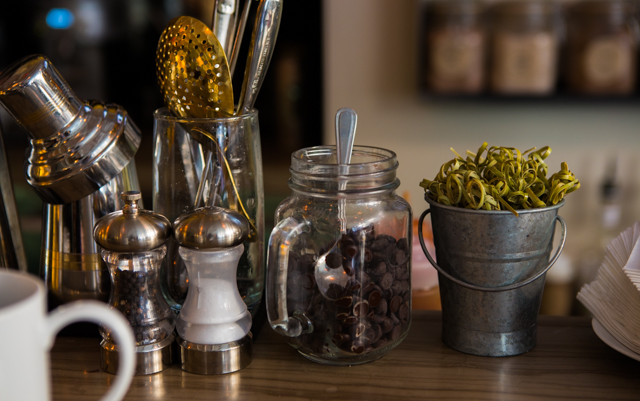
There’s no reason why you can’t have that in between two pieces of really great 9-grain bread and call it your lunch.
So most people are not roasting their own turkey or making their own roast beef or spices they’re just buying cold cuts which are processed in hormones and chemicals and everything under the sun and frozen and defrosted and sliced and kept in the fridge―all of these steps, that if you really knew what they were, you probably wouldn’t eat them from the deli.
And we’re one of the few people, I think―maybe a couple of other companies, in New York at least, that don’t do that.
JH: What’s the most common misconception about the NYC food scene?
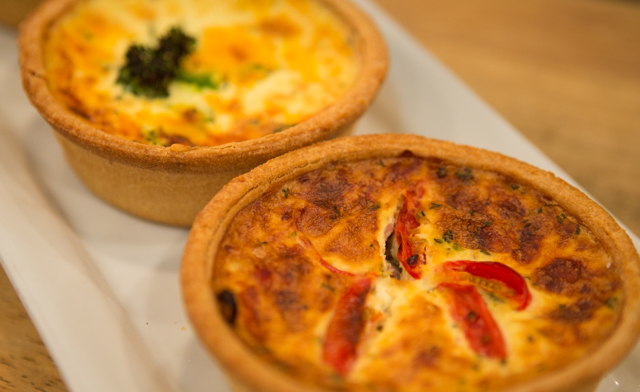
ES: Well, it goes back to the core value and some of the challenges therein. It's not impossible to find a good, healthy meal, but people don't really consider that to be true―or they don't consider it at all, and it’s only because most people have that experience. They have the experience of having unhealthy foods at all times, and you can’t really get away from it, so they succumb fact that they can only have that for lunch.
Or, if they go into a place like a quick serve, like a deli, or a Pret A Manger, or something and they’re not advertising either that they’re actually using healthier products or hormone-free meats, everyone by default assumes it’s just not. But they eat it because there’s no other choice.
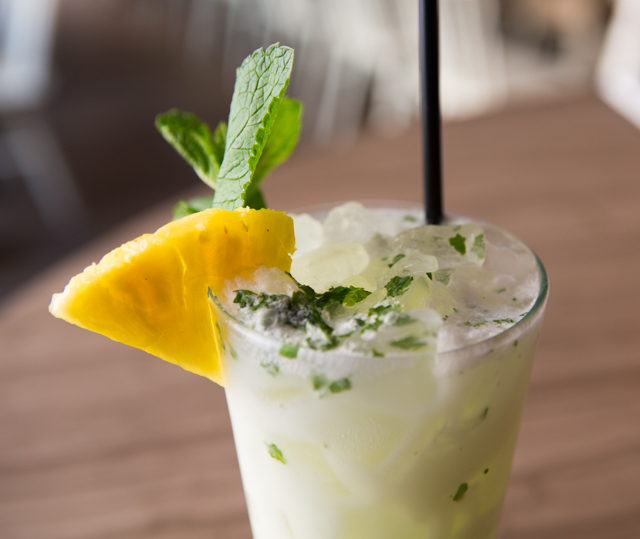
We provide the other choice, but nobody knows about it.
It’s really important for people to understand you are what you eat. What you put into your system now is how you will feel later―maybe not today or tomorrow, but It will certainly catch up with you in years to come, and there’s no reversing that. If you don't take care of yourself and what you're ingesting on a daily basis, the results are not going to be too good.
That’s a personal philosophy, and that’s something we move forward with.
JH: What’s the hardest thing about owning a restaurant, let alone multiple, in NYC? Location, rent, especially locations where you’re in a highly saturated tourist area, so a mixed demographic (who am I feeding?), etc.
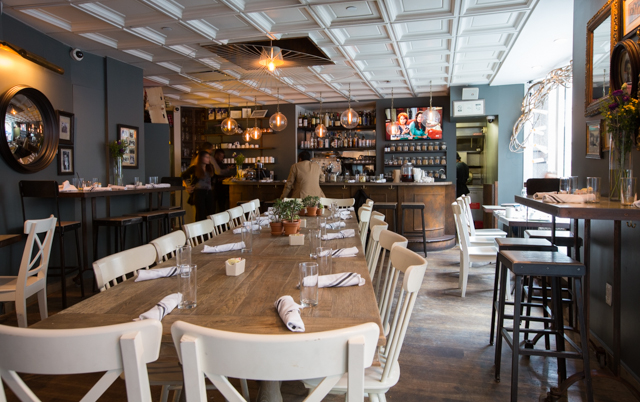
ES: Most of those things here are challenging. Rent is something you negotiate from the beginning. Do people make mistakes sometimes? Yeah, I guess so, you try not to when you negotiate the terms of your lease.
The demographic, I think, since it’s ever-changing, especially in New York City, you need to keep up with it. That’s the most difficult part. You need to be on it. You can’t skip a beat.
If you’re not watching to see who is your new customer base, based on who’s coming in, what they’re attracted to, what have people said, and always keeping in touch with your customer base, which is something we try to do regularly, it could be a problem.
There’s no reason you can’t have what people consider high-end or “gourmet” food in a quick-serve environment.
We, I guess the word is, we kind of spoil our customers with always communicating them and allowing them to always communicate with us. When I was in the stores at all times, most of our regulars would feel very open in telling me what they’re thinking about our product because they’re always changing.
Now, we have suggestion boxes, and managers communicate these to us, and we convey that to the kitchen and make sure our customer is happy based on their requests.
If we come out with a new product, it’s not do or die, we’re serving this for a month, so deal with it. We always ask, "How do you feel? How do you like it?" and then we convey that to the kitchen and the Chef.
JH: It’s officially fall! What do you look forward to most when it comes to new seasonal menus? I know you're not in the stores nearly as much as you'd like, but how much say in how the menu is devised and conceived do you have?
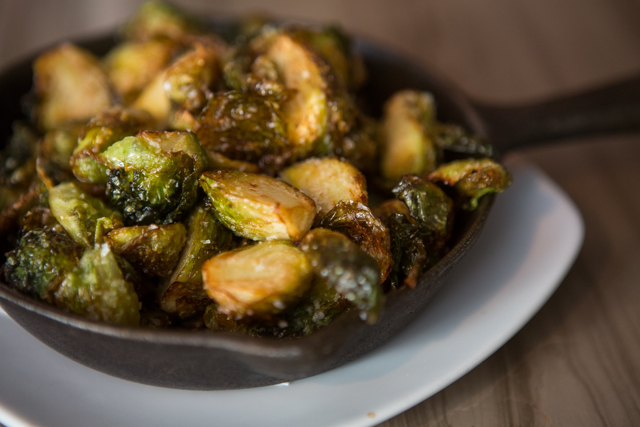
ES: A lot! I do a lot of research especially with fall vegetables, which happens to be my favorite, because you have such a variety. You have so many different root vegetables to choose from, and many different combinations in creating new things.
I’m always looking for different vegetables, something bright in color or different in color; a date, radish, sweet potato, parsnip or turnip―one little ingredient can change the look and taste of everything.
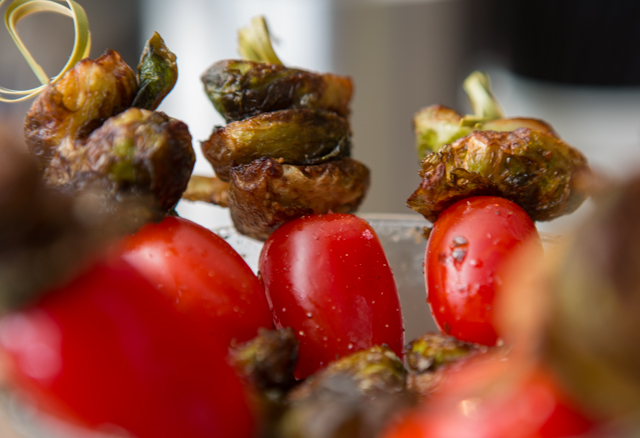
And most vegetables are just under-used. People are using nothing but lettuce tomato, and, I don’t know, onion, maybe a cucumber, on a sandwich, but you’re missing out on everything else that is so nutritional that has such high nutritional content.
We’re about to launch new sandwiches, and you’ll find things like butternut squash and roasted apple and even pumpkin on them. And the taste is just off the charts because nobody’s ever done anything like that.
JH: The word “Empire” has been thrown around when it comes to Blue Dog. What are your thoughts on that?
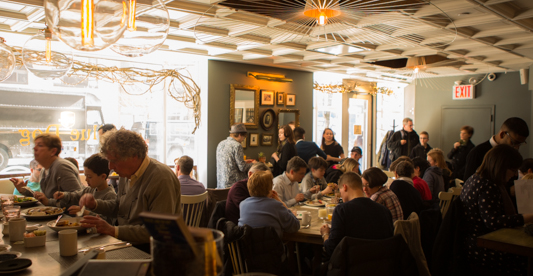
ES: I guess? They called it a little empire. It’s just healthy food. I just think it’s so undervalued especially when we’re all running around, in New York City of all places. It’s a rush to get everywhere, always late, or at least always running on such limited time.
You don’t give yourself 30 minutes to actually sit down and have a meal, and if we can get into everyone’s minds as the go-to place for the healthiest meal and you don’t have to think about it, and we have so many choices, so you’ll never get bored?
The demographic, I think, since it’s ever-changing, especially in New York City, you need to keep up with it. That’s the most difficult part. You need to be on it. You can’t skip a beat.
That’s a reputation we have had, and continue to, and I’d like to continue forward with that.
JH: Across all locations, what’s your favorite menu item right now?
ES: My favorite is at our restaurant on 50th Street. It’s the Butternut squash fries. They are just butternut squash fries, and they are the most delicious fries you’ve ever had. They literally just melt in your mouth―you’re not even chewing them.
With them we do a chipotle aioli. It’s just off the charts. And the Butternut squash fries do not taste like french fries or sweet potato fries, they have their own texture. You just have to try them. They’re kind of amazing.
We’re going to start Pumpkin fries―which are awesome. They’re super healthy and we’re actually even baking them.
JH: Understanding that you’ve run these restaurants with your family, would you say that, contrary to popular belief, everybody kind of bemoans the death of the death of the local, would you say it is possible for a “Mom & Pop shop” to survive in the current NYC climate?
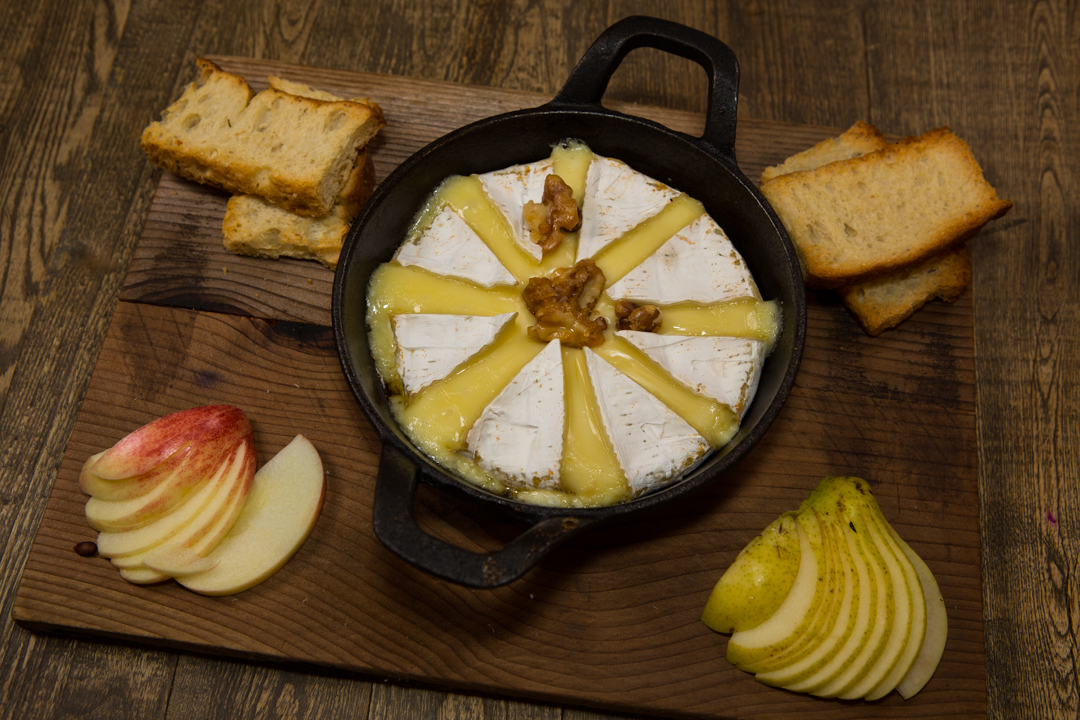
ES: I think so? I think that people are looking for something.
I do feel it’s harder to get the attention of a landlord or people, because you’re not a Starbucks, but I think there are enough people in NYC who are educated enough to know the difference between the two, that a mom & pop shop will go out and source quality, fresh product as opposed to the contrary.
I think it is possible to survive, and I think NYC locals appreciate it.
JH: To what/whom would you credit the success of this concept? Is it just the regulars, the people that you’re serving, or is it the execution of the menu?
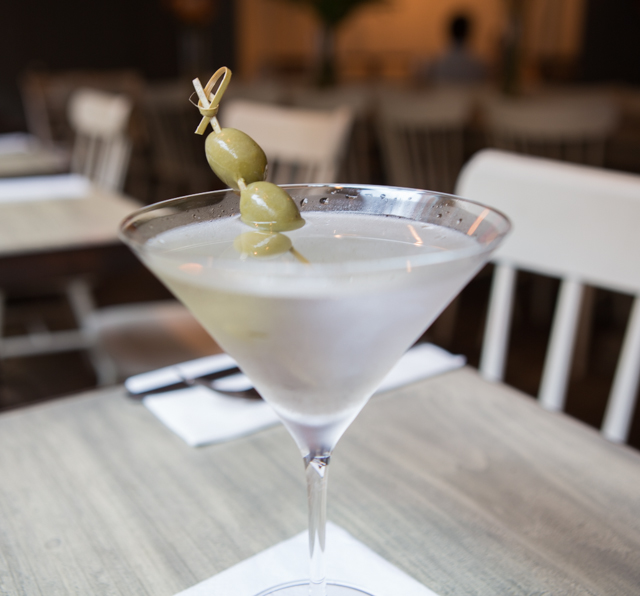
ES: It’s a combination between the variety of the menu which allows for people to always have a new fresh choice in front of them, and most of all a loyal fan base. We keep them happy and they keep coming back.
[anad2]
I like choices. I get bored easily, especially when it comes to food, and I think if you can find clever ways of combining healthy products, that will keep people interested and excited. The Monday thru Friday should not be a mundane experience, especially when you’re going to work.
JH: What do you wish New Yorkers understood better about the food they put into their bodies on a daily basis?
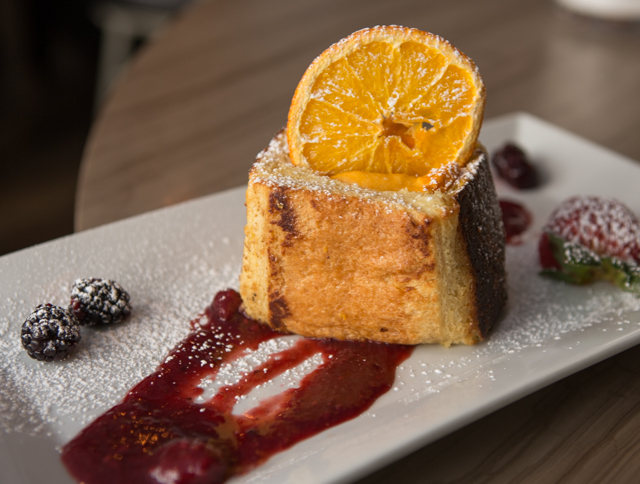
ES: I wish they actually thought about it, because if they thought about it the same way they think about the time they spend getting their nails and hair done―small self-improvements that don't necessarily have a long-term impact on their well being; if people would spend some similar amount of time thinking about what foods they're putting into their bodies, they would certainly realize that they need to change, and they’d just be happier.
And that's what we're doing. That's what we're here for. You need to worry about your health and well-being, and think about it, and make better choices, but at the same time, you should be enjoying delicious meals where you don't have to think about it for a moment.

So it's the education, really, and that’s something we provide in-store. We always have educational pieces within just to show what the benefits of certain things are.
We map out the benefits, so by no means are we a health foods store, but we like to educate the consumer because most people don’t take the time to educate themselves, so we’re happy to do that for them.
Treat yourself at one of Blue Dog Kitchen's various locations across New York City, and book a table for dinner right here!
[Feature Image Courtesy Helvetiq Blog]


